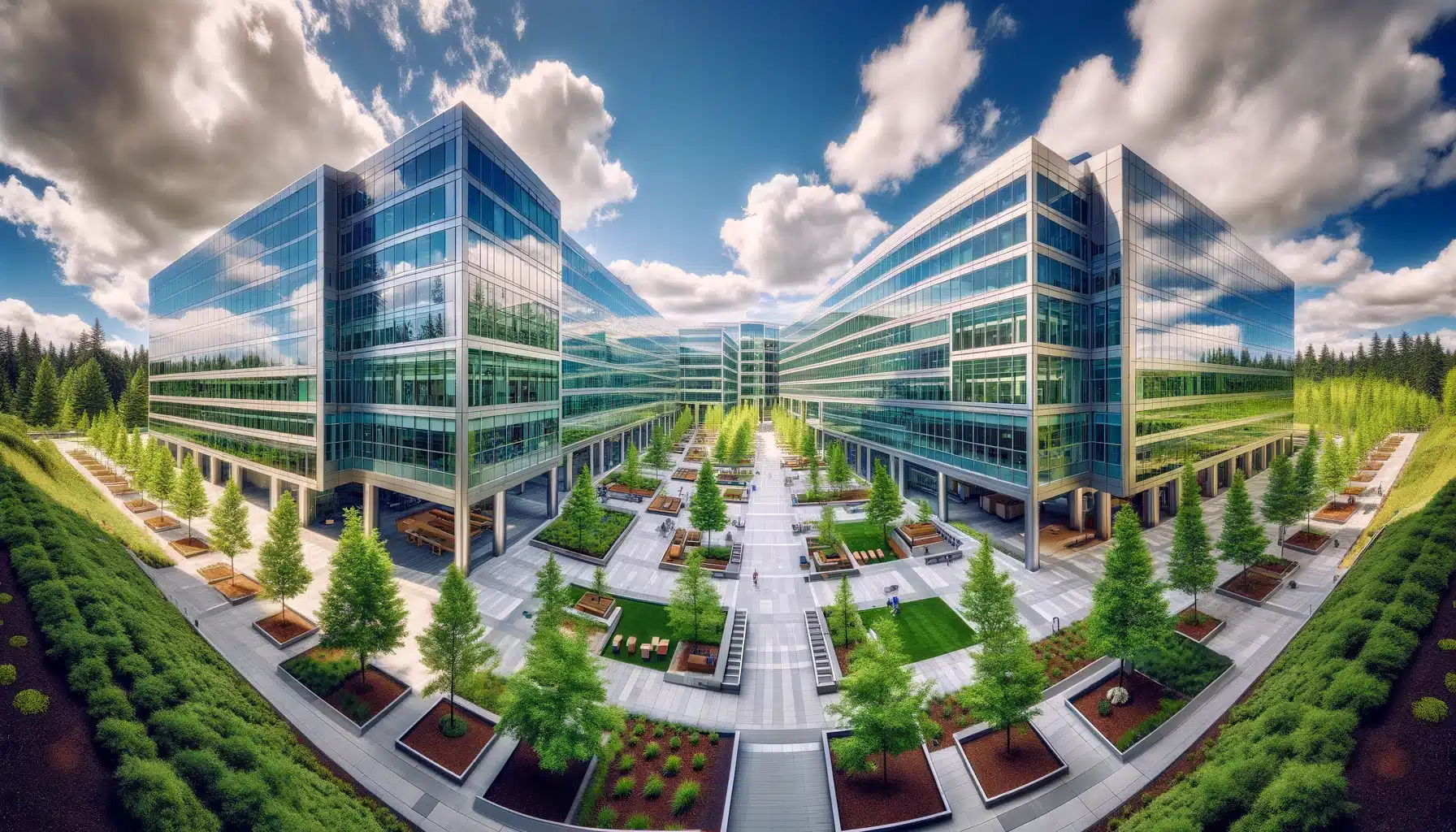Microsoft Building 40, an overview

Microsoft Building 40 is part of Microsoft’s main corporate campus located in Redmond, Washington, USA. The campus is a collection of buildings that serve as the central hub for Microsoft’s operations, and Building 40 is one of these many structures. It’s used for various purposes related to Microsoft’s business activities, including offices for employees, meeting rooms, and other functional spaces. The address is typically listed within the broader context of the Microsoft Redmond campus.
Microsoft Building 40 is notable because it’s one of the older structures on Microsoft’s Redmond campus and has historical significance for the company. It’s known for housing the teams responsible for some of Microsoft’s core products. For instance, in the past, Building 40 was home to the team that worked on Microsoft Office, one of the company’s flagship suites of productivity software. The development and success of products like Word, Excel, PowerPoint, and others have been attributed to the efforts of teams working in this and similar buildings on the campus.
The relevance of Building 40 extends beyond just the products developed there; it’s a symbol of Microsoft’s growth and evolution. The building has witnessed significant milestones in the company’s history, including various product launches and strategic shifts that have shaped Microsoft into the technology giant it is today. It’s a physical testament to the company’s enduring presence in the tech industry and its ongoing contributions to technology and innovation.
Microsoft’s Redmond campus, sprawling over an area of approximately 500 acres in the state of Washington, stands as the heart of the company’s operations and a testament to its immense growth and influence in the technology sector. This campus, often likened to a small city, is a complex network of over 120 buildings that house a vast array of Microsoft’s operations, including research, development, marketing, sales, and administration. The architecture blends functionality with aesthetic appeal, featuring modern buildings interspersed with green spaces, walking paths, and recreational facilities, reflecting Microsoft’s commitment to fostering a productive and employee-friendly environment.
At the core of the campus is a sense of community and innovation. The layout is designed to encourage collaboration and creativity among employees, with open workspaces, communal areas, and meeting rooms equipped with the latest technology. The campus also boasts a range of amenities aimed at ensuring the well-being and convenience of its workforce, including cafeterias serving diverse cuisines, sports fields, fitness centers, and even retail stores.
Sustainability is another key focus, with the campus featuring energy-efficient buildings, waste reduction programs, and initiatives to preserve the natural environment around it. This commitment to sustainability is part of a broader vision to minimize the company’s environmental footprint and contribute positively to the planet.
The Redmond campus is not just a workplace but a hub of innovation and a reflection of Microsoft’s culture, values, and aspirations. It’s where thousands of employees come together to shape the future of technology, making it a pivotal location in the global tech landscape.
Microsoft is the largest employer in Redmond, Washington. Since establishing its headquarters there in 1986, Microsoft has played a significant role in the city’s economy and development. The sprawling campus and the large number of employees working there underscore the company’s influence in Redmond, making it a central economic and cultural force in the city. The presence of Microsoft has also attracted other technology companies and businesses to the area, further solidifying Redmond’s reputation as a tech hub in the Pacific Northwest.
Microsoft Redmond Campus Refresh Project
The Microsoft Redmond Campus Refresh project is a major redevelopment initiative that involves replacing outdated buildings with new, modern structures. The project is designed to enhance the campus environment, focusing on pedestrian and bicycle-friendly spaces. The redevelopment includes the construction of multiple new buildings, creating a campus that’s more cohesive and community-oriented, with a variety of amenities and green spaces designed to improve the working environment for Microsoft employees. Completion is targeted for mid-2025. For more detailed information, you can visit the official City of Redmond website.
Microsoft Treehouses
Microsoft’s Redmond campus introduced unique outdoor meeting spaces, including treehouses, to enhance the connection between nature and the workplace. These spaces, equipped with Wi-Fi and power sources, are designed to boost creativity, focus, and well-being among employees by integrating the natural environment into their daily work routine. This initiative reflects Microsoft’s commitment to innovative and health-promoting workspaces. For a detailed exploration, you can read the full article here.
ChatGPT
Writer
ChatGPT is a large language model developed by OpenAI, based on the GPT-3.5 architecture. It was trained on a massive amount of text data, allowing it to generate human-like responses to a wide variety of prompts and questions. ChatGPT can understand and respond to natural language, making it a valuable tool for tasks such as language translation, content creation, and customer service. While ChatGPT is not a sentient being and does not possess consciousness, its sophisticated algorithms allow it to generate text that is often indistinguishable from that of a human.
